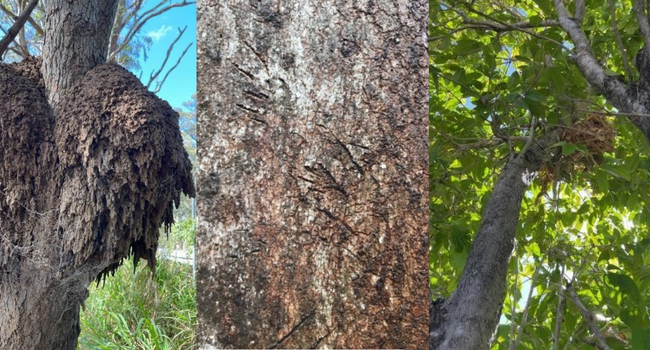Habitat assessments, a key to project success
Habitat assessments are a common survey method that the Ecology and Environmental Management team conduct when they visit project sites. The team looks for aspects of the environment that can either give clues that certain species could live in that specific area, or signs that confirm those species are residing there.
Some of these clues include searching through rocks and rocky outcrops, rocks that can break apart easily (e.g. shale) or rocks with crevices. The cracks and crevices between rocks can provide habitat for small reptiles.
Trees and logs with hollows provide shelter and even breeding habitat to a multitude of species. Mammals such as bats, possums, gliders and antechinus can utilize tree hollows for their home, whereas birds like owls, parrots, rosellas and kingfishers can use the tree hollows to house their nests. Reptiles and amphibians can use tree hollows for shelter, with snakes, skinks and even frogs being detected within tree hollows depending on the project site location. Obviously the size of the tree hollow can influence which species may take up residence there and also the specific species requirements but tree hollows can provide a perfect home for many of our Aussie natives. Old or dead trees(also called stags) can provide habitat for many species, and are an important part of the ecosystem even though the tree may not be alive anymore. Finally, trees or logs with peeling bark or loose bark can provide habitat for small reptiles who can sneak underneath the bark layer to hide.
Bird nests can be on the ground (e.g. brush turkeys or curlews) or in trees or large shrubs. Bird nests can vary in shape and size, and some bird species can be identified purely by the shape of their nests! Possums also build nests called dreys, they usually look like a big messy nest in the crook of a tree.
Other habitat features that Ecosure look for when on the project site are food resources like termite mounds and mistletoe. Termite mounds can be both on the ground and up in trees, and provide food for species like frogs, geckos and frill-necked lizards. Termite mounds on the ground are targeted by echidnas, and may have a hole dug in the side where the echidna was burrowing in to access the termites. Mistletoe plants provide food for sugar gliders, possums and birds. Mistletoe berries are sweet and sticky, and this stickiness helps deposit the mistletoe seeds in new locations once they pass through the guts of the animals who eat them.
Finally, Ecosure looks for active signs of animals living in the project area. These signs include scats, scratches, feathers, tracks and pellets. Fresh koala scat can still have a lingering smell of eucalyptus and echidna scat is full of the compressed outer bodies of termites, which is their main diet. Scratches on tree bark can be caused by many species like possums, goannas and koalas. Species like the endangered glossy-black cockatoo chew on the cones of Allocasuarina and Casuarina species (commonly known as Sheoaks). These chewed cones are called ‘orts’ and are evidence that the glossy-black cockatoo forages in the project area, even if they are not spotted during bird surveys.
So take a look around the next time you’re on a bush walk or a stroll in the local park. You may spot a tree hollow and even some signs of who may be using it. Scratches on the bark of some eucalypt tree species might be visible, and close inspection of the tree forks could reveal a drey with a sleeping possum in it.

